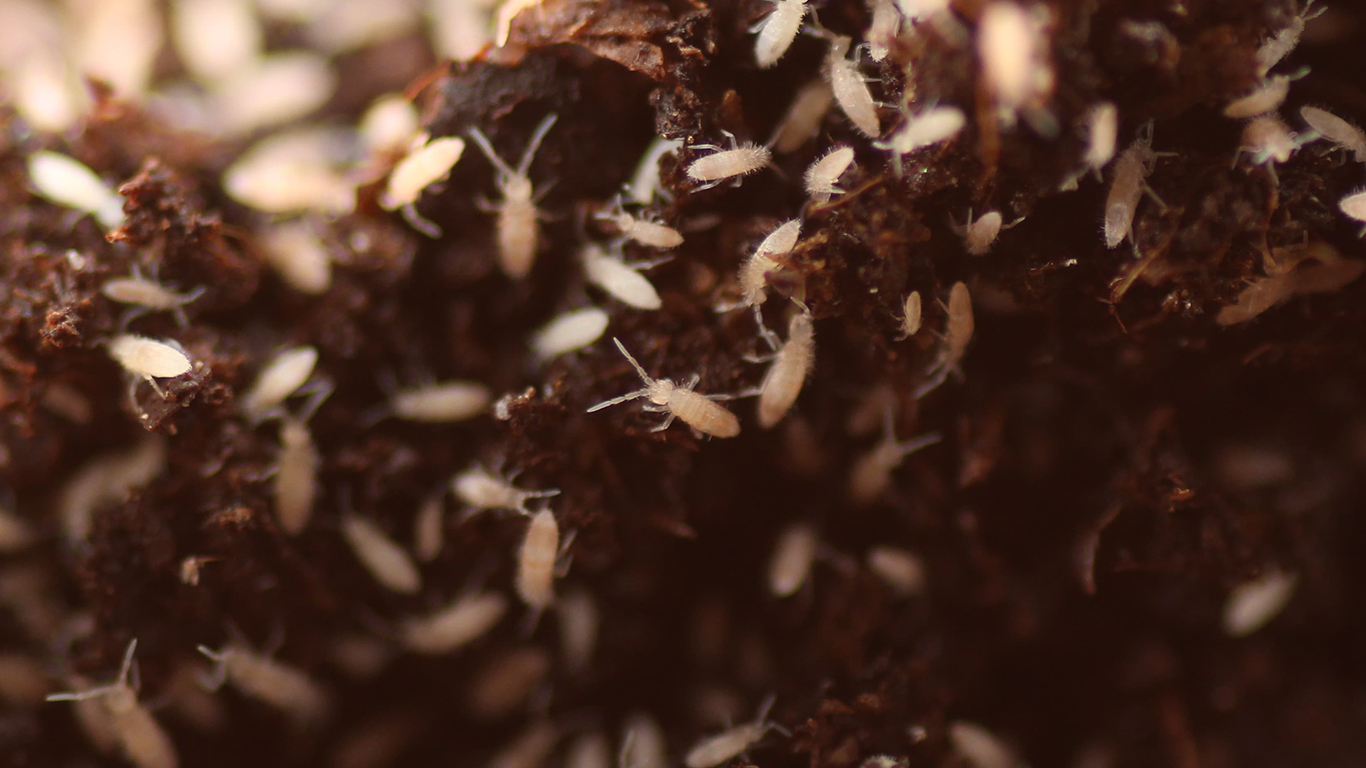Preface:
After you have read this article, you can buy the breeding substrate for springtails from the discounter and the food, with a best before date of 12 months, from the drugstore.
About 15-20 years ago I tried to breed tropical springtails from time to time. The emphasis is on attempted! I found out again and again that the effort I had to put in and what came out in the end was not satisfying for me. One needed relatively large containers, in which one gave as soil substrate coco humus, leaves, white peat and cork crumbs. This was also not exactly available at every corner and was therefore connected with a considerable additional expenditure.
They were fed with vegetables such as zucchini, cucumber, carrot and mushrooms, thinly sliced, and flake food. Fish food flakes, dog food flakes and yeast flakes, which were very finely grinded and sprinkled on the substrate. All of this cannot be kept in stock for too long, making it very impractical. Then you had to wait 8-10 weeks until the breeding was stable before you could feed animals. At that time I decided to spend the few Euros and buy tropical springtails from a feed animal dealer.
General:
Springtails (Collembola) are a class of hexapods belonging to the Entognatha which have existed for about 400 million years. They reach a body length of 0.1 mm up to 17 mm and are mainly found in humus layers of not too dry soils down to a depth of several meters as well as on decaying plant material. They also colonise habitats as diverse as rainforests, coastal shores, sand dunes, deserts or snow-covered high mountain areas. Due to their water-repellent skin, they can survive floods in an air bubble or manoeuvre on the water surface. To illustrate this again, springtails can survive up to 14 days floating on the open sea, covering several hundred kilometres.
This very small breeding food is indispensable for feeding young mantids, poison dart frogs, fish and many other pets. I use it especially for the breeding of my mantid nymphs. In general you can put the so-called clean-up crews into every ground of an insectarium.


Breeding:
I use BraPlast cans of 1.3 litres as breeding containers. In general you can use anything that can be sealed tightly. I fill these to 2/3 with grill charcoal which I have previously smashed into 2 EUR coins sized pieces. Do not use briquettes or egg charcoal because these were often chemically treated. Then I pour up to half tap water over it, if you want to feed the springtails to your fish I would prefer distilled water. Ready is the breeding approach!
One should store the culture preparations at about 23-25°C, as the development time depends on the temperature.
Feeding:
I only use brewer’s yeast for feeding. I put as much into the breeding box as the animals eat within 2 days. Alternatively you can feed 5-6 uncooked rice grains. Mould nests form around the rice grains, which are eaten.
The rice grains last much longer than brewer’s yeast. I don’t like mould forming in my breeding boxes, on the other hand my springtails developed faster with brewer’s yeast. You can get brewer’s yeast in any drugstore in powder or pill form. I use the powder and fill it into a salt shaker for better dosage.
Feeding Springtails to other animals:
There are several ways to do this, it is best to try everything:
- Either you take a piece of charcoal and shake it out over the cup with the animals to be fed, or you separate them into an empty cup and can feed them more dosed
- Alternatively you can take the breeding box and tilt it slightly into a corner until the water almost runs out. Hold this corner over the cup and blow gently on the water surface
- Simply pour a little water from the breeding box into the insectarium


